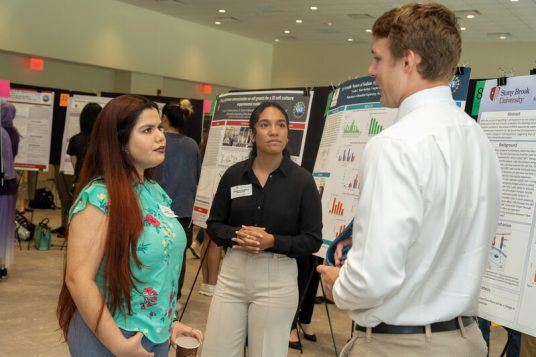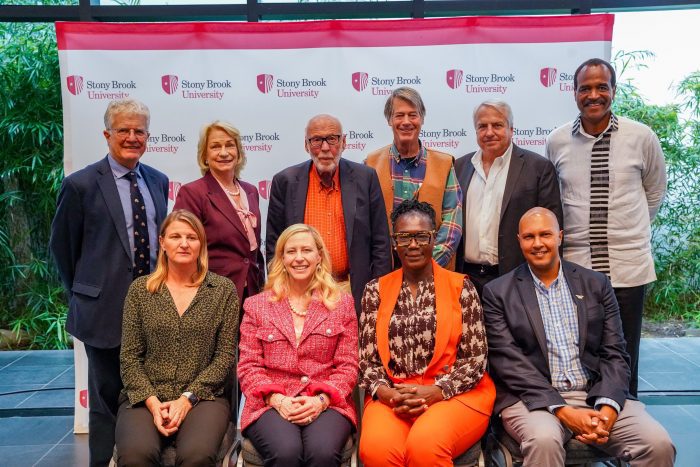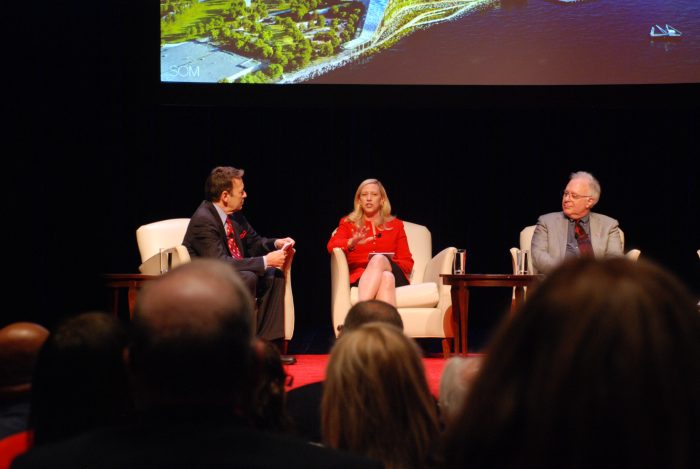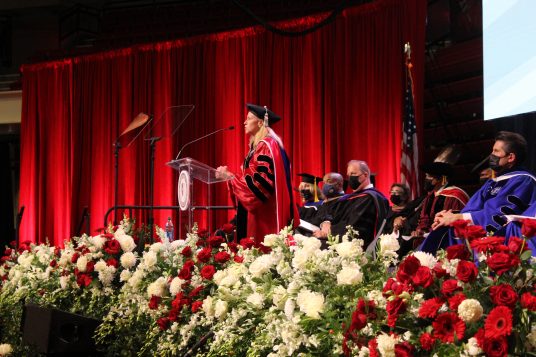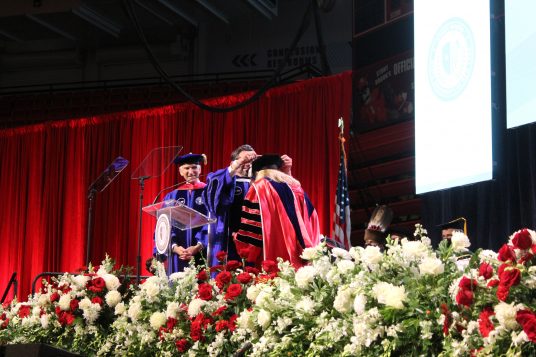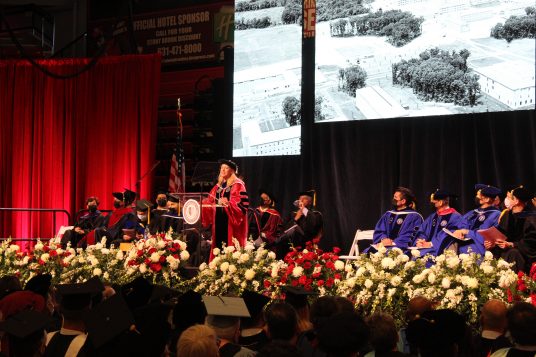Stony Brook University President Maurie McInnis celebrated the successful conclusion of Stony Brook’s 2023 Chancellor’s Summer Research Excellence Fund internships which facilitated the university’s Summer Opportunity for Academic Research (SUNY SOAR). SUNY SOAR is a pilot program that provided $250,000 from SUNY to Stony Brook as well as to other SUNY institutions.
The Principal Investigator (PI) on this initiative was Karian Wright, Director of the Center for Inclusive Education (CIE) with co-PIs: Dr. Maria Nagan, Karen Kernan and Lisa Ospitale. SUNY SOAR expanded opportunities for undergraduates with financial need and/or first generation college students and offered its participants a stipend ($5,000), a meal plan ($800), plus full housing support ($4059/student), a significant factor in recruiting students with financial hardship. The inaugural group of 25 SUNY SOAR participants (Summer 2023) comprises 20 Stony Brook and 5 non-Stony Brook SUNY students.
Stony Brook was one of the initial participants of the Summer Research Excellence Fund, along with Binghamton University, University at Buffalo, SUNY College of Environmental Science and Forestry and SUNY Polytechnic Institute.
“Stony Brook University prides itself on delivering a world-class, affordable education to our diverse student population, many who are the first in their families to attend college,” said Stony Brook University President Maurie McInnis. “As a flagship public research institution, we recognize students have a critical role to play in solving society’s biggest challenges. Thanks to the Chancellor’s Summer Research Excellence Fund/SUNY SOAR, our students gained essential hands-on experience working closely with faculty researchers who are innovators and leaders in their fields.”
SUNY Chancellor John B. King, Jr. said, “Internships are essential to providing students with real-world, practical experience that will prepare them for their future careers. SUNY has set the goal that every student will be able to participate in an internship by the time they graduate. The Chancellor’s Summer Research Excellence Fund was the first step in making that goal a reality and investing in the upward mobility of SUNY students.”
Internships contribute to student success by presenting students with the skills and opportunities they need to succeed in their career through real-world experience and increase their marketability. Sixty percent of employers prefer to hire graduates and workers with internship experience, and a 2022 study found that for each additional high impact internship completed, students boosted their job or continuing education placement odds as well as their starting salary.





